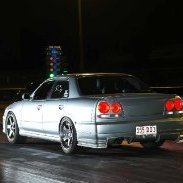Xo2 Exhaust With Magnaflow X Pipe
Announcements
-
Similar Content
-
Latest Posts
-
I think in the modern era we live in, if I were converting a hydro lifter head to solid, particularly when chasing revs, I'd be seeing what I could do to use shimless buckets. Those of us with Neos usually have this persistent niggling fear of a shim getting spat out and ruining everything. Shim-over is...yucky that way. At least the Tomei kit appears to be conventional, but it would still be nice if they'd decided to go shimless.
-
Ok guys thank you very much. GCG highflow it is then 🙂
-
forgot to mention that when it does this it does not kill the engine, but I have not kept the pedal down long enough to let it, as I see no reason to beat up on it as its got to be something simple, small and dumb causing this. And as soon as I let off pedal, the engine returns to its normal super smooth operation and rpms re-stabilize quickly, once below 4k.
-
neither stumble or cut really seem to be an appropriate term....hard to explain its like a rev limiter but at 4k, but it violently shakes engine and entire vehicle as the rpms will not rise over 4k, even with slow acceleration. as soon as it hits 4k, it sounds like entire spark is lost entirely. plugs were 1.1 which I used as such, but later put in new plugs gapped down to .8 changed back after issue arose when I replaced the coils, still does it with either plug gap...damn and it was all running so good.
-
By TurboTapin · Posted
Oh how times have changed! I actually lean it out relative to my water/methanol injector duty cycle. The methanol adds a lot of fueling and you can then lean it out even more due to reduced knock.
-






Recommended Posts
Create an account or sign in to comment
You need to be a member in order to leave a comment
Create an account
Sign up for a new account in our community. It's easy!
Register a new accountSign in
Already have an account? Sign in here.
Sign In Now